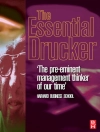Since the initiation of economic reforms in 1979, China has become one of the world’s fastest-growing economies. From 1979 to 2007 China’s real gross domestic product (GDP) grew at an average annual rate of 9.8%. Real GDP grew 11.4% in 2007 (the fastest annual growth since 1994). While China is expected to continue to enjoy rapid economic growth in the years ahead and could become the world’s largesteconomy within a decade or so, it faces a number of challenges, including widespread corruption, an inefficient banking system, over-dependence on exports and fixed investment for growth, pollution, widening income disparities, and growing inflationary pressures. The Chinese government has indicated that it intends, over the coming years, to create a "harmonious society" that would promote morebalanced economic growth and address a number of economic and social issues. Trade and foreign investment continues to play a major role in China’s booming economy. From 2004 to 2007, the value of total Chinese merchandise trade nearly doubled. In 2007, China’s exports (at $1, 218 billion) exceeded U.S. exports (1, 162 billion) for the first time. China’s imports were $956 billion and its trade surplus was$262 billion (a historic high). Well over half of China’s trade is conducted by foreign firms operating in China. The combination of large trade surpluses, foreign direct investment flows, and large-scale purchases of foreign currency have helped make China the world’s largest holder of foreign exchange reserves at $1.5 trillionat the end 2007. China’s economy continues to be a concern to many U.S. policymakers. On the one hand, U.S. consumers, exporters, and investors have greatly benefited from China’s rapid economic and trade growth. On the other hand, the surge in Chinese exports to the United States has put competitive pressures on various U.S. industries.Many U.S. policymakers have argued that China often does not play by the rules when it comes to trade and they have called for greater efforts to pressure China to fully implement its World Trade Organization (WTO) commitments and to change various economic policies deemed harmful to U.S. economic interests, such as its currency policy, its use of subsidies to support state-owned firms, trade andinvestment barriers to U.S. goods and services, and failure to ensure the safety of its exports to the United States. Concerns have also been raised over China’s rising demand for energy and raw materials, its impact on world prices for such commodities, increased pollution levels, and efforts China has made to invest in energy and raw materials around the world, including countries (such as Iran, North Korea, and Sudan) where the United States has political and human rights concerns.This book provides an overview of China’s economic development, challenges China faces to maintain growth, and the implications of China’s rise as a major economic power for the United States.
Mary Jo Devaland
China’s Economic Policy Impact on the United States [PDF ebook]
China’s Economic Policy Impact on the United States [PDF ebook]
Beli ebook ini dan dapatkan 1 lagi GRATIS!
Format PDF ● Halaman 259 ● ISBN 9781617281860 ● Editor Mary Jo Devaland ● Penerbit Nova Science Publishers ● Diterbitkan 2018 ● Diunduh 3 kali ● Mata uang EUR ● ID 7219657 ● Perlindungan salinan Adobe DRM
Membutuhkan pembaca ebook yang mampu DRM












